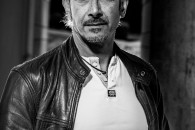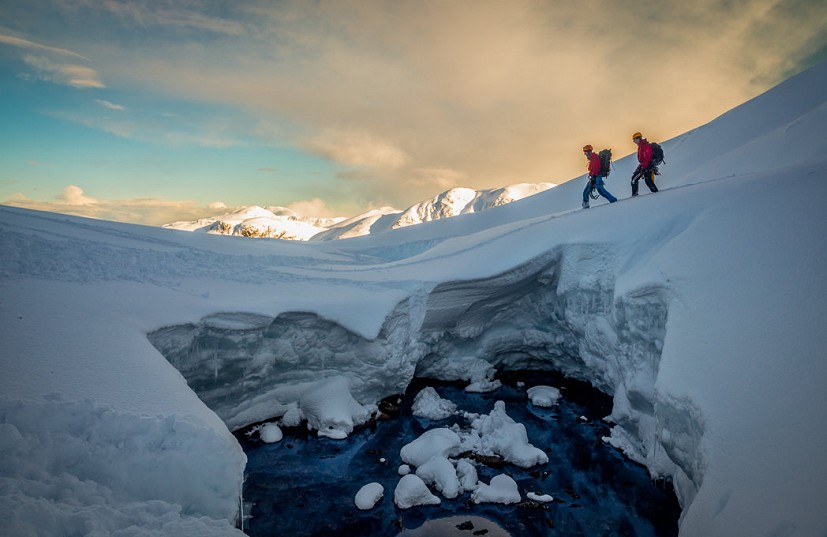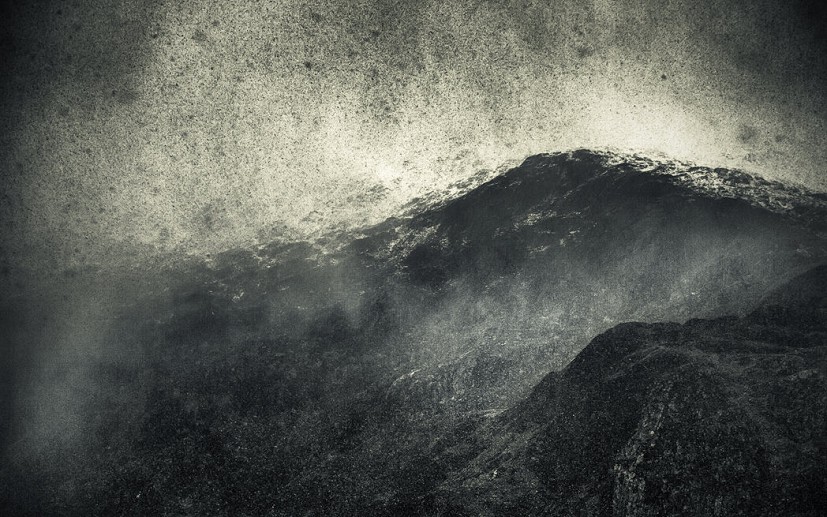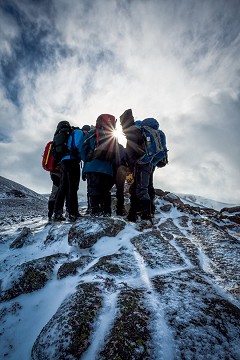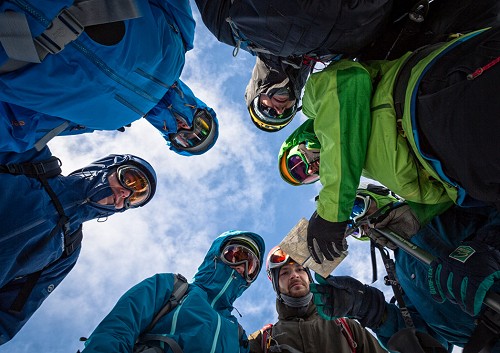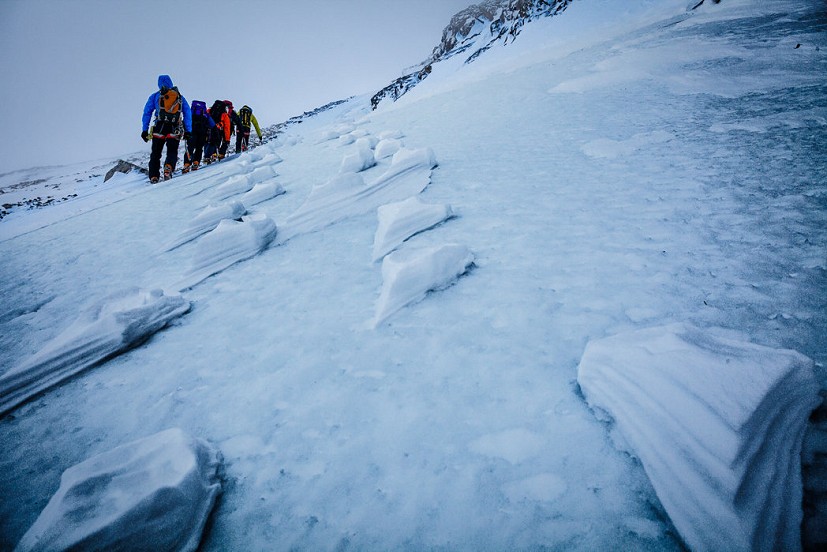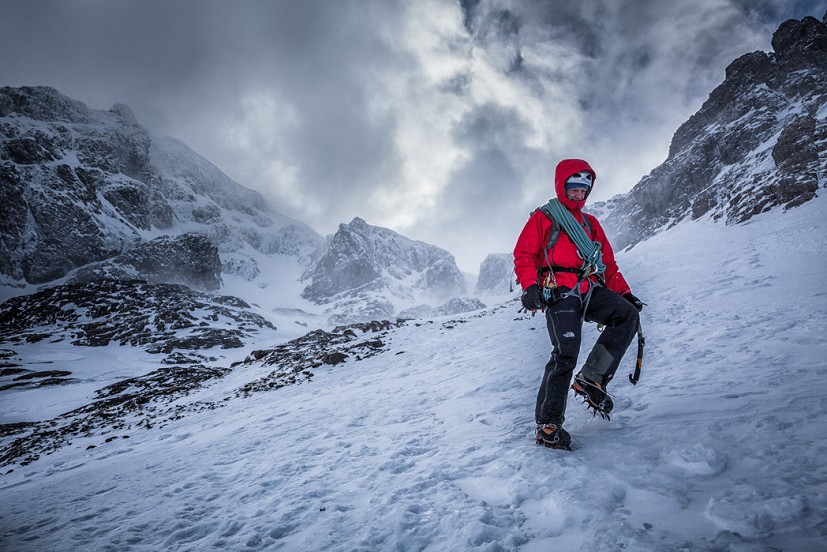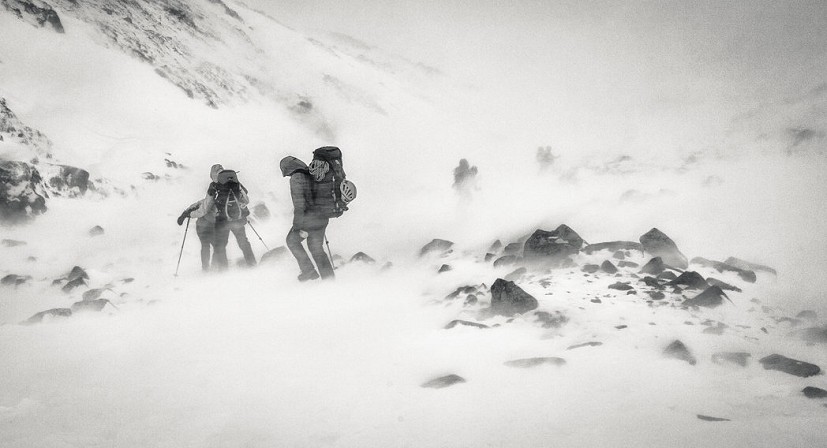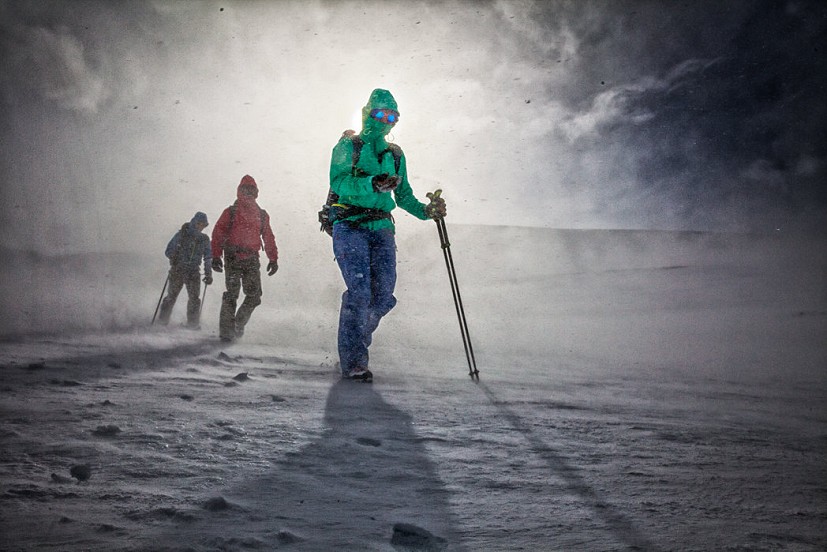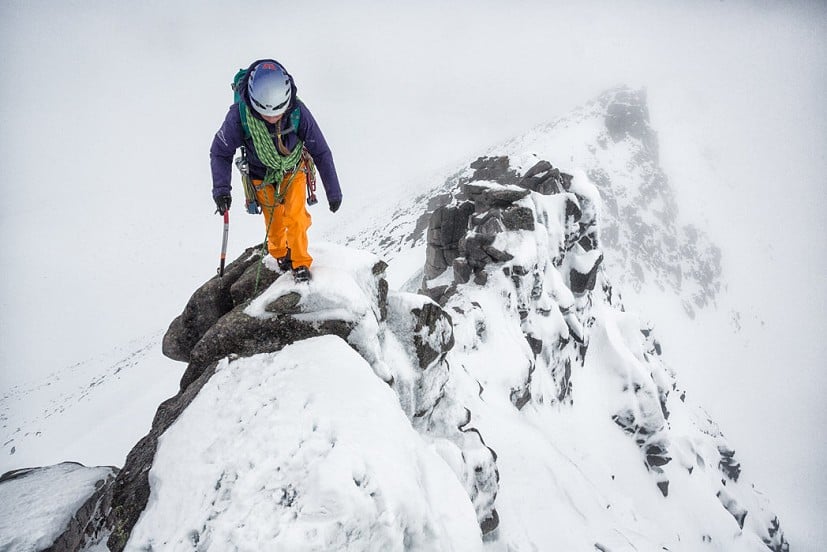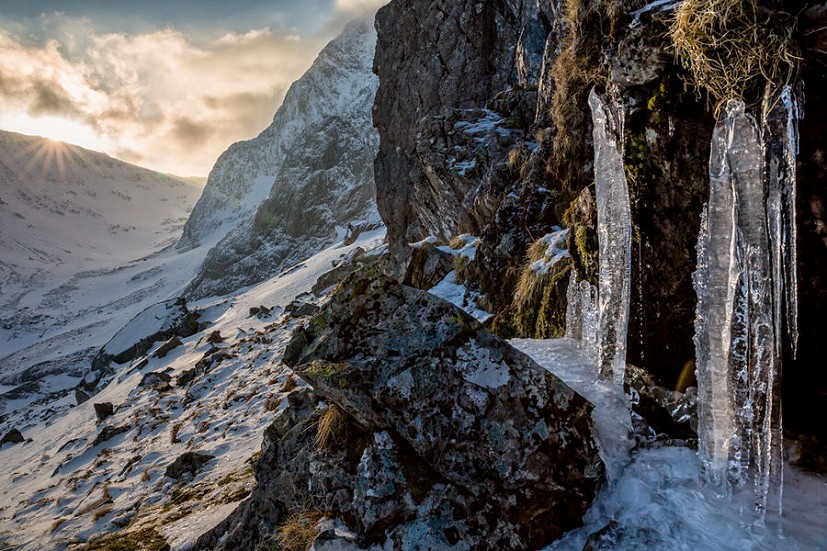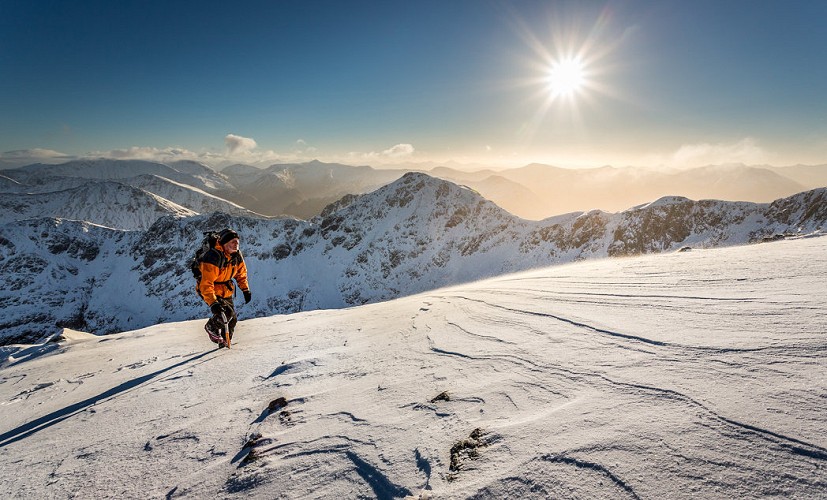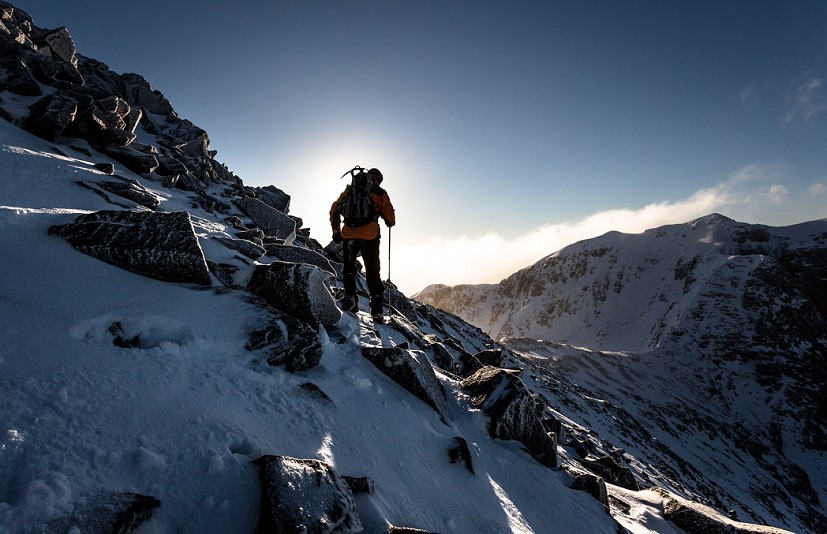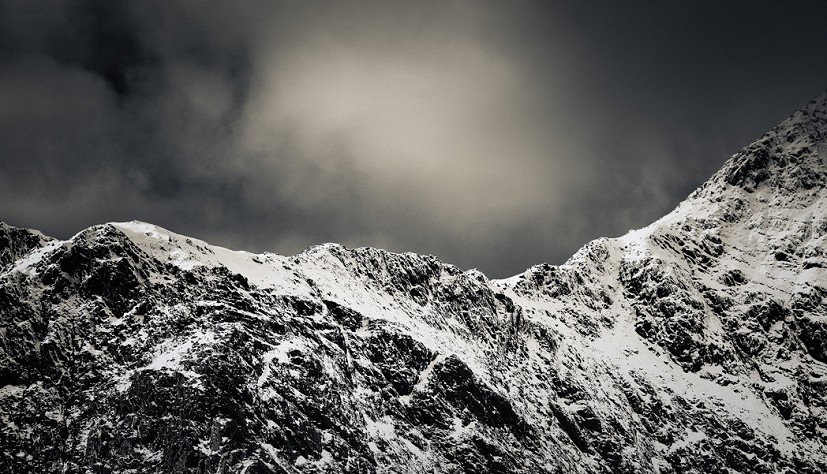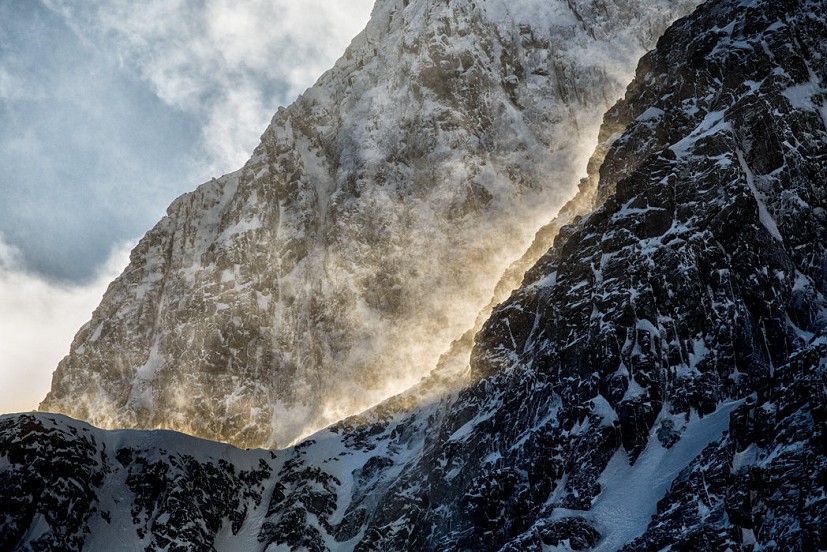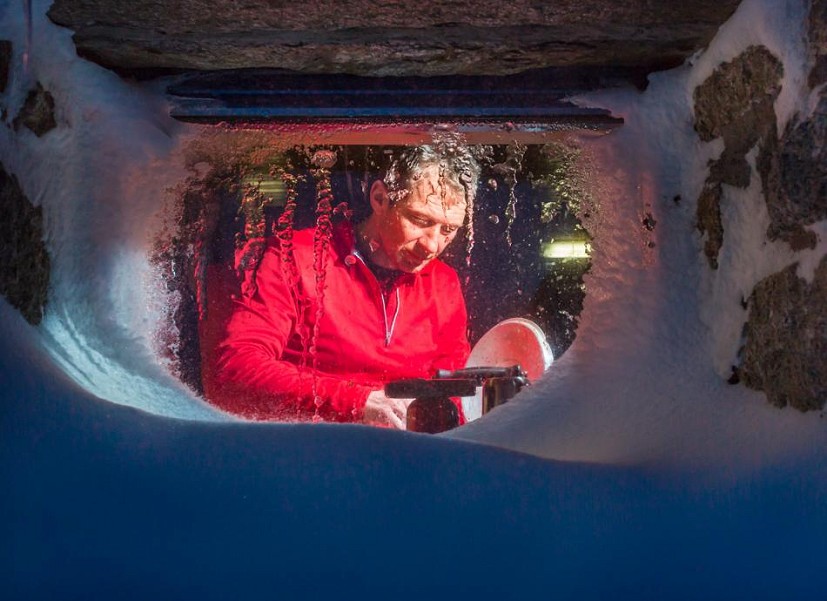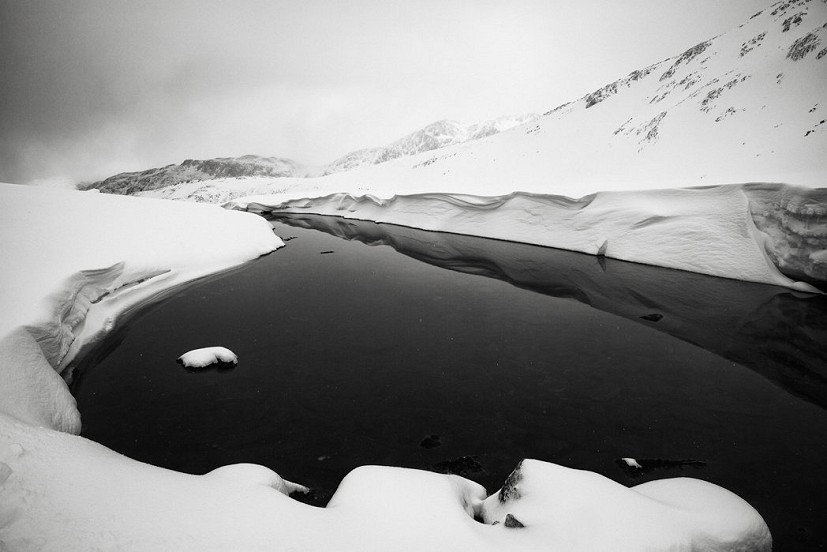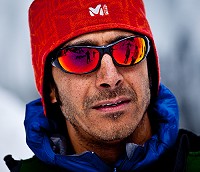for Winter Hillwalkers
Winter may be stunning on the hills, but it's also the harshest time of year for photography. From choice of subject matter and composition to the basics of keeping kit dry and hands warm, pro mountain photographer Nadir Khan offers his tips for better winter pictures.
There are many reasons to love winter and the photo opportunities it brings: a once-familiar landscape is transformed into a place of wonder, beauty, crystals and softness. Hard edges are rounded and smoothed out and all around us is light and magic. Then of course there's verglas, avalanches, crevasses, hypothermia, snowstorms and benightments... to say nothing of flat camera batteries and cold hands. Beauty and danger go hand in hand in winter, yin and yang; one can't exist without the other. So with that in mind, let's go on a creative journey through the winter wonderland.
What are the main differences between winter photography and photographing the hills at any other time of year?
First up, the obvious stuff: days are shorter, dawn is later, dusk is earlier so there's less time to be out in daylight.
The trajectory of the sun across the sky is much lower than in summer and the shadows it produces are longer throughout the whole of the day, not just early and late.
The cold will sap batteries. Depending on the camera make and model, you may want to carry spare batteries and keep them warm next to your body in a chest pocket.
Gloves will be worn throughout the day and you should be sure that you are able to keep warm enough with the gloves on but still be dextrous enough to handle camera functions. Remember that keeping your core warm is essential in order to keep your hands warm. Touch screens will be a pain, as you have to keep taking gloves on and off.
I'm going to assume that we're all familiar with rules of thirds etc and all that stuff. Personally, I don't think about any of that stuff when I'm shooting; instead I think in terms of feel, emotion, space, balance and a connection between what I'm feeling and sensing emotionally and what I'm composing through the viewfinder.
But that said, here are some things that I do consistently which I think make a particular difference to winter photography:
Get down and dirty
Photography gives us a unique chance to present a different perspective on the familiar and mundane , and can transform it from the ordinary to a piece of art. After all, that's what being a creative in the outdoors is, it's seeing something from a different perspective and presenting it and saying, look at things differently.
How many times have you been out with a group of friends and gathered around to chat about the navigation, or the weather deteriorating or where to stop for lunch. Here are two shots of one such scenario.
In the first shot, the sun is positioned just on the edge of a walker to give a little pop in the centre of the frame and the lines on the rock used as lead lines into the main group.
In the second image I'm under the group looking up at the sky , no flash was used as the snow on the ground acts a a massive reflector but different cameras will handle dynamic range better than others and the higher end DSLRs will deal with shadows better than cheaper cameras.
I will often be lying on the ground to get a shot. That small shift in position allows us to shoot from a different perspective and use foreground detail to add to our shot, as in this image of sastrugi on the walk up to the NE buttress of Ben Nevis.
Think about exposure
When shooting in snowy conditions, always remember to dial in a little positive exposure compensation. Your camera is set up to give a white scene an exposure of 18% grey so if you want to keep your snow white then you'll need to add about 2/3 to 1 stop of +ve expo comp. It will vary during the day depending on how much snow is around, so try to experiment a bit.
Be a wide boy (or girl)
No I don't mean get stuck into horrible off-widths and tape your hands; but go ultra wide-angle. I mean the equivalent of 17-40 on a full frame sensor. The benefit of going wide is that it allows you to pull in more lead in lines from around your subject to add drama and punch, creating a dynamic image if you like.
In this image of a climber descending from the Ben, I've used a wide angle lens to accentuate the buttresses and cliffs, bring in more drama from the sky and used all the lines in the image to lead into the main subject, the walker. But be careful with ultra wide angles; the closer your subject is to the edge of the frame, the more distortion you'll get as well as poor edge sharpness and chromatic aberration. Here it really is a case of you get what you pay for, and good quality wide angle optics aren't cheap.
Be hardy
Within the bounds of common sense, try to get out in the worst conditions you can manage. In the UK that's probably every other day. In this country we're blessed with a LOT of weather. Whereas in the Alps, if it's blowing a storm everyone stays in, you don't tend to do that in Scotland or Snowdonia. Some of my best images have been taken in some truly appalling conditions.
The two images above were taken in horribly high winds, with so much spindrift blowing around that simply getting a clean shot was a challenge. Turning your back to the wind can help but sometimes there's no option but to shoot into the wind and try and clean the lens between every shot. You might not get a technically perfect shot but hopefully it will have some atmosphere and capture something of the conditions that make winter walking and mountaineering in the UK such an epic experience.
I'm not a landscape photographer per se, but some of my earliest influences were landscape photographers like Ansel Adams; his eye, his feel, and his use of tone were exceptional. But adventure sports photography takes place in a landscape and as much as I can I try and involve the landscape in as much of the frame as I can. It's always good to keep an eye on what the light is doing, where's the drama happening and keep an open mind.
Shoot into the sun
I like winter sun because it's low in the sky and you can often include it in compositions. When shooting with the sun in frame I use can aperture of f16 to give a tight burst ,If you shoot wide open , then the sun is an amorphous blob in the sky which isn't very attractive. But it can be over done, so I also like to hide the sun behind a walker or the edge of a rock to give an interesting halo effect around the body or rock. Here are two shots taken in Glen Coe showing different ways that shooting into the sun can work.
Shooting into the sun also gives a great way to create lead lines from shadows.
Don't go lightweight
Weight is an issue in winter and the last thing anyone wants is to be lugging around extra kgs of camera equipment but if I'm shooting commercially in the Cairngorms or Ben Nevis then I will carry two camera bodies, one with a 17-40 lens and one with a 70-200 f4 lens. The reason is that in the high winds which often are present on these mountain ranges, I can't guarantee being able to change lenses without snow/moisture getting into the camera body, potentially ruining the rest of the shoot; so I have the wide angle in a top loader holster over my shoulder and the other in a Loka UL F-stop bag.
These two shots could only be achieved with a long lens, which is a comapratively heavy and cumbersome bit of kit to lug around in the hills.
The reason I would carry a long lens is that if I want to pick out details in the landscape, then I can easily do that. I'd rather carry the extra weight than miss a shot, but it's always a compromise and balance between what your objectives are, how fast you want to move and how much other gear you really want to carry. But if the forecast is for a big high pressure sitting over the mountain range, then I'd probably go with just one body and change lenses if I have to.
Remember, it's not all about the action
There is an emotional cadence to a climbing or hillwalking trip - packing the gear, the drive, the walk-in, the ascent, the summit, the descent... All those different moments are part of the experience, so don't just get the camera out for the key action and summit shots, but try to capture little snippets throughout the journey too, to bring a human element to your photos. It's rather like a story that you can tell through pictures; and it doesn't necessarily end when you are back in the valley. Relaxing post-walk and thawing out in the pub or the hut is a key part of a good hill day after all. Some of my favourite shots have been taken when the main action is already over.
Keep alert to the possibilities... and stay out late
Finally, be creative and stay alert to the possibilities all around you. Sometimes when you're racing to get to the next summit, or get off the hill before dark, there's a tendency to just put your head down and forget about taking images. I know I do that sometimes - when it's just too much hassle or you're just knackered and want to get down and get warm/fed/drink beer etc. But art and creativity has a cost, and it's not just monetary. Good winter mountain photography involves a degree of suffering; after all if it cost nothing, would it have any worth?
Top tips
- I carry spare batteries and memory cards - SanDisk Extremes 32 and 64GB that resist the cold well.
- My gear is carried in F-Stop gear Loka UL pack. Its got all the bits I need for attaching axes, skis, helmets and crampons. Plenty of makes and models are available depending how much equipment you intend to carry, but at the very least you'll need a decent holster-style camera case.
- Make sure your head torch and mobile phone are fully charged.
- Keep multiple lens cloths in every pocket - your camera will forever be steaming up, getting wet, being snowed on - and once damp, a lens cloth is little further use.
- Some form of anti-fog coating on the front element of the lens can be helpful for avoiding snow sticking to the lens, and a hydrophobic solution may help.
- Wear thin gloves for walking and thicker gloves for slower movement, summit stops and long stints standing around with the camera - but still with enough dexterity to be able to work with. Black Diamond Punishers are about the best I've found, though of course everyone is different when it comes to fit, circulation in the hands and glove preference.
- Bring a duvet jacket: you'll be stationary for long periods!
Nadir Khan runs adventure photography courses at Glenmore Lodge.
"The things that inspire me are great light, dramatic clouds, landscape and some cool action" he says, "whether it's bikers, climbers, runners or kite surfers, being able to communicate the emotions that I feel when making the images is a privilege."
"Thanks for reading, and have a safe and creative winter..."
For more about Nadir, and a bigger selection of his work, see his website nadirkhan.co.uk or follow his posts on Facebook
